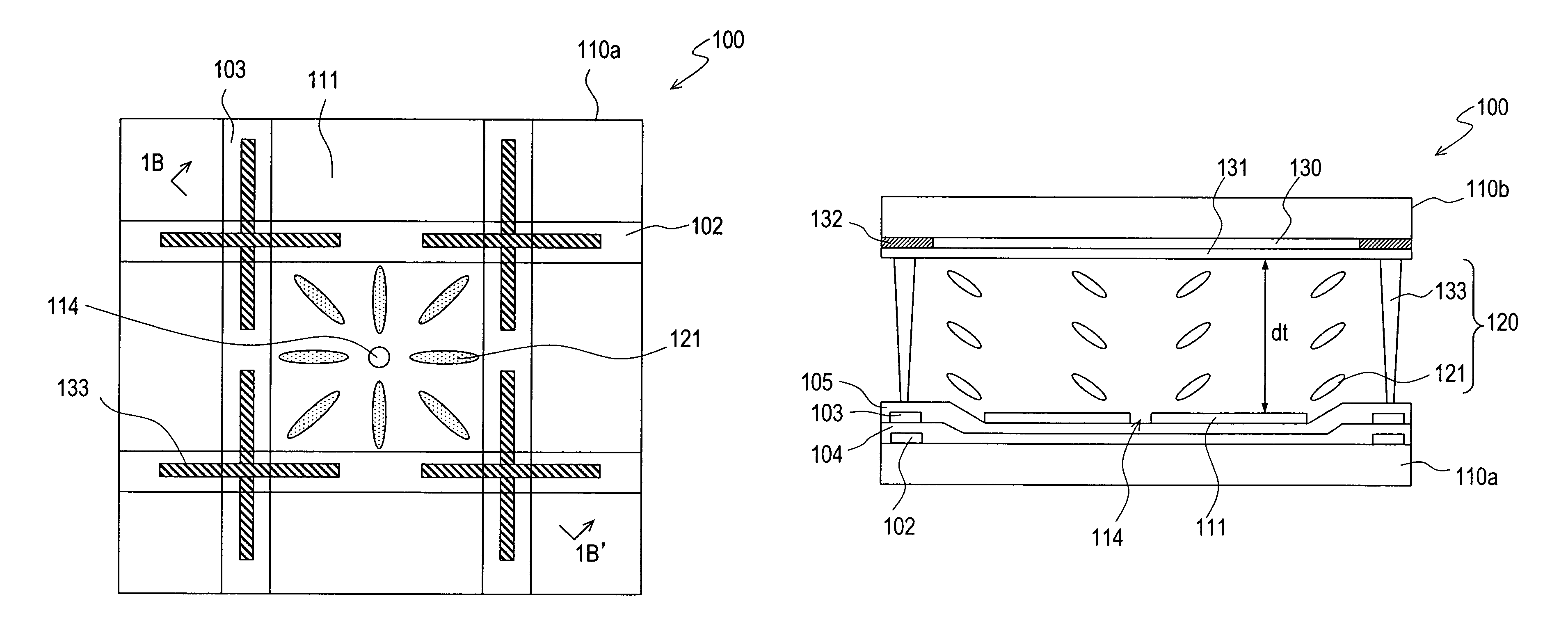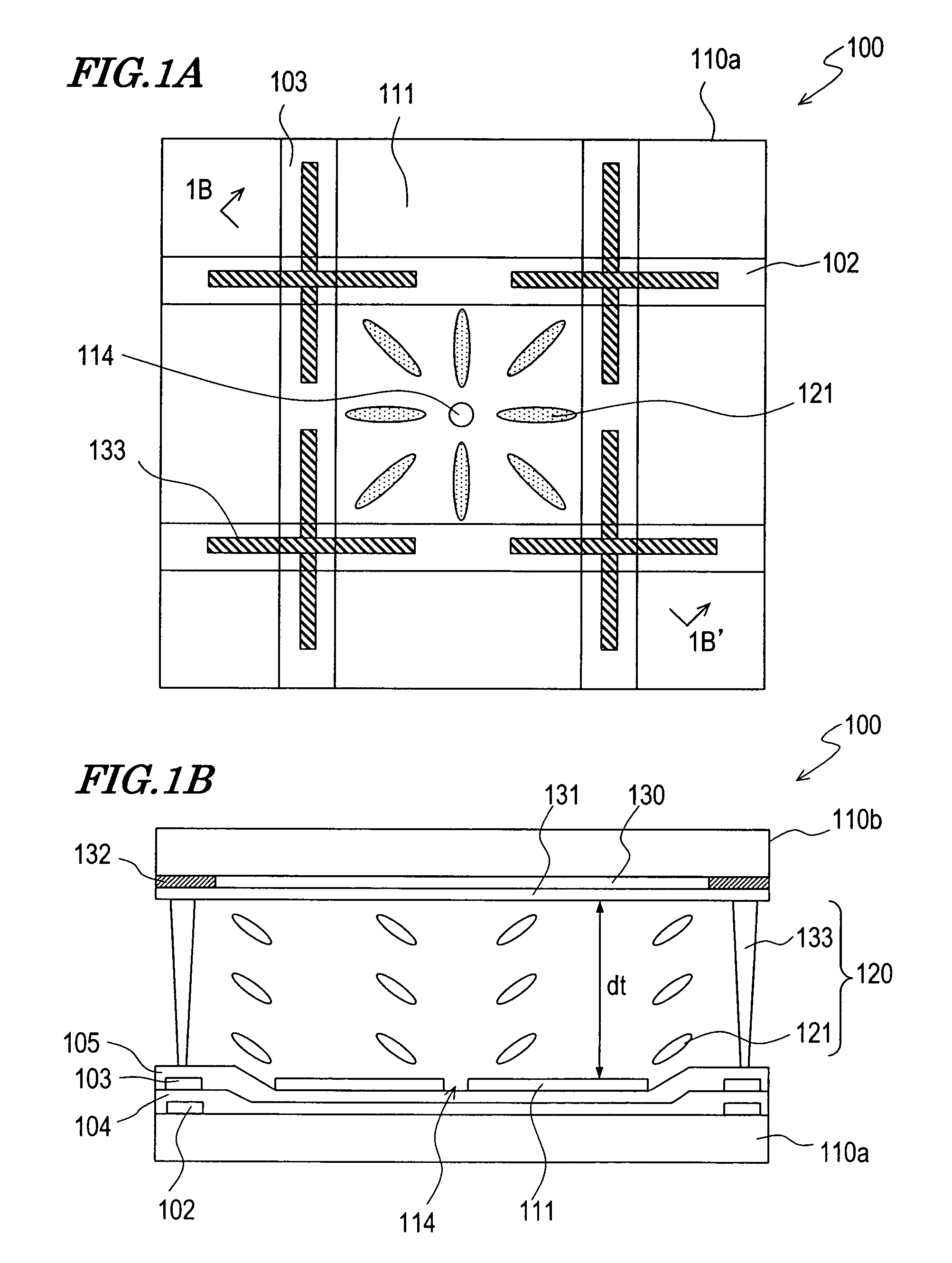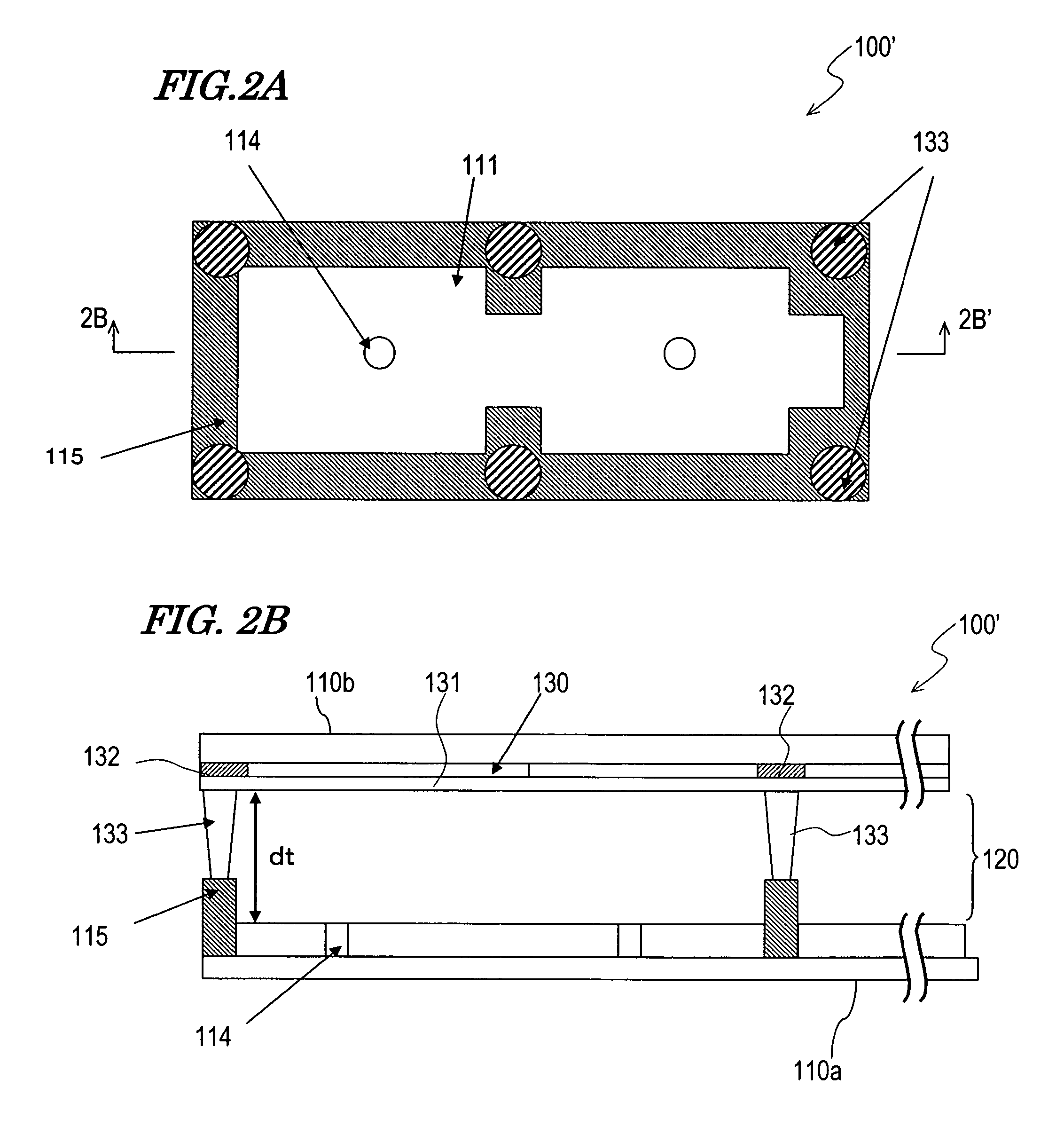Liquid crystal display device
a liquid crystal display and display device technology, applied in the field of liquid crystal display devices, can solve the problems of affecting the production process, affecting the quality of the product, so as to reduce the effective aperture ratio, suppress the decrease of contrast ratio, and stabilize the formation of axisymmetrically aligned domains
- Summary
- Abstract
- Description
- Claims
- Application Information
AI Technical Summary
Benefits of technology
Problems solved by technology
Method used
Image
Examples
example 1
[0120]Specific characteristics of the transflective LCD device of the embodiment according to the first aspect of the present invention will be described.
[0121]An LCD device having the construction shown in FIG. 7 was fabricated. As the liquid crystal cell 50, one having the same construction as the LCD device 200 shown in FIGS. 3A and 3B was used. A transparent dielectric layer having no light scattering function was formed as the transparent dielectric layer 234, and a resin layer having a continuous uneven surface was formed under the reflective electrode 211b, to adjust the diffuse reflection characteristics in the reflection display. The uneven surface was formed by the method described in Japanese Laid-Open Patent Publication No. 9-90426.
[0122]The openings 214 and the wall structure 215 in the LCD device 200 shown in FIGS. 3A and 3B were omitted, so that the alignment regulation was made with the supports 233. Cross-shaped supports (the shape of the supports 133 in FIG. 1A) we...
example 2
[0129]As in Example 1, an LCD device having the construction shown in FIG. 7 was fabricated using a liquid crystal cell having the same construction as the LCD device 200 shown in FIGS. 3A and 3B. A transparent dielectric layer having no light scattering function was formed as the transparent dielectric layer 234, and a resin layer having a continuous uneven surface was formed under the reflective electrode 211b, to adjust the diffuse reflection characteristics in the reflection display. The wall structure 215 was formed integrally with the resin layer (interlayer insulating film) formed under the reflective electrode 211b for imparting an uneven shape on the surface of the reflective electrode 211b.
[0130]Specifically, the active matrix substrate of this example was formed in the following manner.
[0131]First, a positive photosensitive resin layer was formed to cover the circuit elements such as TFTs under predetermined conditions. The photosensitive resin layer was exposed to light...
example
[0205]Specific characteristics of the transflective LCD device of this embodiment will be described.
[0206]An LCD device having the construction shown in FIG. 7 was fabricated. As the liquid crystal cell 50, one having the same construction as the LCD device 400 shown in FIGS. 11A and 11B was used. A transparent dielectric layer having no light scattering function was formed as the transparent dielectric layer 434, and a resin layer having a continuous uneven surface was formed under the reflective electrode 411b, to adjust the diffuse reflection characteristics in the reflection display.
[0207]The pixel region in this example is divided into three sub-pixel regions with the wall structure and the dielectric protrusions, and has a transmission region, a reflection region and a transmission region in this order in the length direction. The wall structure is formed on a shading layer formed in the non-display region (region other than the pixel region). Thus, an axisymmetrically aligned...
PUM
| Property | Measurement | Unit |
|---|---|---|
| tilt angle | aaaaa | aaaaa |
| tilt angle | aaaaa | aaaaa |
| reflectance | aaaaa | aaaaa |
Abstract
Description
Claims
Application Information
 Login to View More
Login to View More - R&D
- Intellectual Property
- Life Sciences
- Materials
- Tech Scout
- Unparalleled Data Quality
- Higher Quality Content
- 60% Fewer Hallucinations
Browse by: Latest US Patents, China's latest patents, Technical Efficacy Thesaurus, Application Domain, Technology Topic, Popular Technical Reports.
© 2025 PatSnap. All rights reserved.Legal|Privacy policy|Modern Slavery Act Transparency Statement|Sitemap|About US| Contact US: help@patsnap.com



